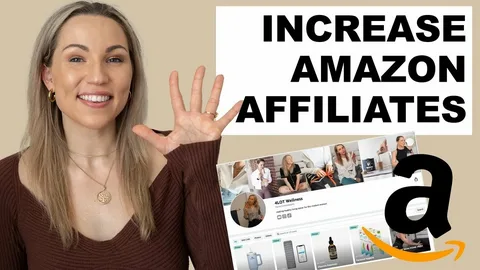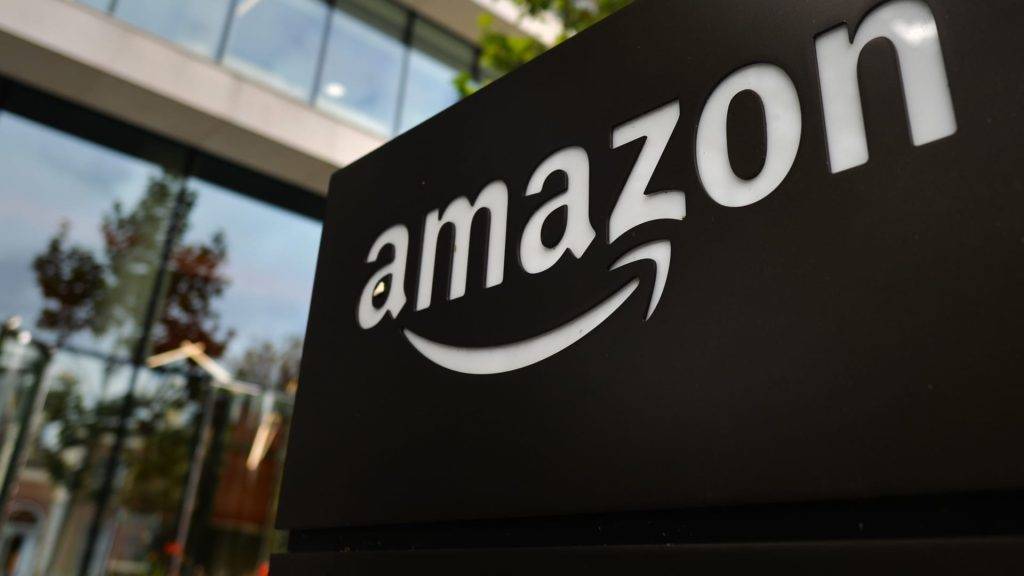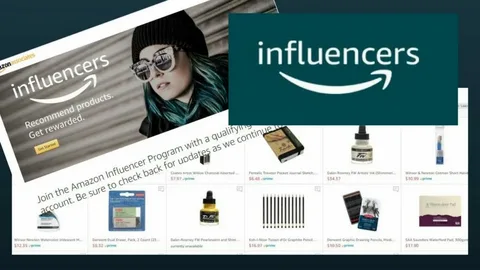Table of Contents
When she wasn’t at work or asleep last summer, Heidi Leatherby was filming videos about products sold on Amazon. She made videos about coffee makers and electric fences, tea bags and vitamin supplements, kettlebells and rubber duckies – more than 2,200 in six months.
“I took all lunch hours, all waking hours of my weekend, piling things up I had in the house,” she said. “That was my life this last summer until there was nothing left.”
Leatherby’s videos have appeared next to Amazon listings for an Etch A Sketch, HP printer ink cartridges and Cherry Pie flavor Larabars, among other products. For every Amazon customer who watches her video and buys the product, she earns a commission. Since July, the 41-year-old technology company manager from Montana says she’s made about $14,000.
Leatherby is an “Amazon Influencers,” an increasingly popular side hustle that pays regular people to promote products on the e-commerce website. The program, started in 2017, was initially aimed at driving customers from social media to Amazon’s site. As Amazon continued to recapture online shoppers from sites like Instagram and TikTok, it’s been flooded by applicants looking to take advantage of new features that make it easy for regular people who don’t have big follower counts to make money.
But the program also serves another purpose: Expanding Amazon’s role as a platform where anyone with enough gumption can make some extra cash.

“Whatever your business is, we’d love for you to grow with us,” Amazon says on its website, offering entry points for people looking to sell stuff, publish books, stream video games, deliver packages – or make videos. Many Influencer Program participants are also Amazon sellers, drop shippers and Kindle publishers looking to tap into the site’s massive audience of consumers and ride the tech behemoth’s coattails to wealth and glory.
As the Amazon Influencer Program has grown, thousands have flocked to Facebook and Reddit groups in hopes of learning how to join them. (Amazon declined to say how many influencers have been accepted.) The program has even given rise to a cottage industry of paid courses and private groups where experienced influencers promise to share their secrets. Unlike traditional social media influencers – who attract large followings by making interesting content, which then attracts brand partnerships and other moneymaking opportunities – Amazon influencers need nothing more than a social media account and an Amazon product to review.
Successful influencers say their Amazon earnings help pay for their children’s sports teams and vacation travel or just supplement household income. But how much they earn – and whether they get admitted into the program at all – is largely at the discretion of the platform. The best way to earn more commission is to post more videos, which requires gaining access to more Amazon products – whether bought, borrowed, sent by a seller or otherwise found somewhere out in the wild.
Leatherby’s goal, for example, is to make 8,000 videos, and she’s optimistic. As a self-published Kindle author, she’s passionate about finding ways to connect with the hundreds of millions of people on Amazon “looking for information on the things they buy.”
“If I can figure out how to get ahold of more products,” she said. “I do see myself churning out video after video.”
Would-be influencers apply to Amazon’s program site with a social media account – Instagram, TikTok, YouTube or Facebook. Once accepted, they can start promoting Amazon products to their followers, if they have any. To earn commission from videos posted to Amazon, they have to submit three samples for approval.
Amazon rolled out these “shoppable videos” in 2021. According to its guidelines, they should be genuine “whether an influencer believes a product to be good or bad,” and follow the company’s rules including no copyrighted music and no children without an adult present. Videos chosen to appear on product listings carry the label “Earns Commission,” which Amazon said aligns with Federal Trade Commission disclosure guidelines for influencer marketing.
While Amazon urges its influencers to be honest and informative in their videos, earning commission on sales provides an obvious incentive to offer positive reviews – as is true of almost any social media influencer. Most people say they try to be truthful, but things can get tricky. When California-based influencer Kaitlyn Wiener’s hair got sucked into a free blowdryer, she declined to make a video. “I was like, I can’t say anything good about this,” she told The Washington Post. “I threw it away and they sent me another product to review.”
Amazon spokesperson Maria Boschetti said that the company’s goal is to make it easier for customers to find products they want to buy and that the Influencer Program “enables content creators to make helpful, informative product recommendation content for customers while enjoying rewarding work opportunities.”
“We receive highly positive feedback from customers and creators on the program, and it continues to grow as new creators join and existing creators grow their followings,” she added.
(Amazon founder Jeff Bezos owns The Post.)
– – –

‘Amazon is in complete control’
When she first heard about the program through a friend on Facebook, Gina Kuehne, a 37-year-old former Long Island schoolteacher thought an influencer had to have trendy clothes, perfect hair and makeup, a staged house and 100,000 social media followers. But she soon learned that Amazon’s Influencer Program is different.
“I’m a hot-mess mom that barely has on clean clothes, and my hair [is] in a messy bun every day,” said Kuehne, who quit her full-time job, relocated to Houston with her family, and has been making videos since May.
While her children, 7 and 12, are at school, Kuehne is at home using the Amazon app to scan wall art, last season’s Christmas decorations, even snacks in the pantry to see if they’re listed for sale on the site. She has posted hundreds of videos – often filmed in her bedroom closet – promoting scented candles, pickleball paddles and electric toothbrushes.
Kuehne also makes money training other Amazon influencers. For $97, she sells a course to members of a Facebook group called “Redesign Your Money Mindset: Control your chaos to increase your wealth!” that helps “moms who want to make money on THEIR schedules, passively earn extra cash, and enjoy more time with their families.”
You don’t need to take a course to figure out how to make money, she said, but it speeds things up. Amazon said influencer-taught courses on the program, which is free to join, are independent and not approved by Amazon.
Wiener, the California influencer, was lucky to get admitted to the program in less than a week last August. By December, her monthly earnings were $1,500, largely from videos of remote-control cars and fancy Lego sets, which sold especially well during the Christmas shopping season. But Wiener, who has also made money selling on Amazon, said she has a “love/hate relationship” with the company.
One of the products Wiener promoted in her application was a hair straightener. As soon her account was approved, Amazon placed the video at the top of the product page, and before long, it was earning her 10 commissions a day. “I was selling so many things right off the bat, I was like, ‘Wow, this is actually working,’” she said.
But after a few months, Wiener’s said that her video “got bumped by someone new” with no warning or explanation. “If I’m selling so many, why would they replace me with someone else?” she asked.
Participants have many theories and strategies for how to make money. Some go after products that don’t have videos yet. Others go after the most expensive or the most popular items. One influencer even built a web extension that helps identify popular Amazon listings with the video feature activated and calculates how much they would earn per sale.
But how Amazon selects videos, chooses whether to place them at the top or bottom of a product page, and decides how long they will be prominently displayed is a total black box, program participants say.
The company said it provides customer service for the program and shares educational materials for influencers through its website. But ultimately, “Amazon is in complete control,” said Kuehne, who doesn’t bother trying to reverse-engineer the company’s algorithms, preferring instead to simply make more videos.
“It’s so fickle, and it changes at an exponential rate,” she said. “To do this the right way, you have to understand that.”
– – –

Running out of products
Kelly Saposnick was only approved as an Amazon influencer in October, but she’s already hooked. One of the first videos she posted was of the Tangle Teezer hairbrush.
In one day, “six of those hairbrushes sold,” she said. “The possibilities seem very large to me.”
Saposnick used to sell weight-loss supplements for a multilevel marketing company called Plexus, and she remembers when her dad used to sell water filtration systems for Amway, so hustling is a family business. These days, she involves her three adult sons and their stuff in her Amazon videos: mechanics tools, ski gear, computer equipment. “They’re lined up, ready to go,” she said.
She said she buys all of her and her husband’s clothes on Amazon so she can review them, and she frequently browses Amazon’s Best Sellers page for new purchases. Recently, she agreed to make videos of 30 pairs of shoes an Amazon seller is sending her free; her only hesitation, she said, was where to put them all.
“It’s definitely work,” Saposnick said. But with the money coming in, she doesn’t see herself taking a break anytime soon. “We haven’t run out of products yet.”
Running out of products is a common problem, and it forces influencers to get creative. On a recent visit to her dad’s house in Florida, Saposnick said she made 10 videos of things he owns. Leatherby, the Montana influencer, said she scans grocery-store shelves for items that also are listed on Amazon. And when she visited her in-laws in Hawaii, Leatherby made videos of their deck furniture, their outdoor trash can – even an office chair.
“I am staying here on the Big Island with family, and I have been working out of this spare room in this office for the past week and I cannot tell you how much I love this chair,” she says in the video.
When they run out of other options, some experienced Amazon influencers suggest turning to items in rented Airbnbs or borrowed from people on Facebook Marketplace, influencers said. Amazon’s rules say influencers should have knowledge of the products they’re reviewing, even if they don’t own them.
Some influencers acknowledge pushing the envelope. Morgan Rainey, better known online as Cajun Ventures, often posts videos to Instagram sitting poolside or in a French cafe. She talks about how she grew up in a trailer park but is now a self-employed millionaire thanks to Amazon.
“You won’t believe how much Amazon paid me to review products,” says Rainey, who also sells a $299 “Social Media Growth and Influencing Masterclass” that she says can help anyone attain the same lifestyle.
But in August, Rainey’s account was banned after posting more than 3,600 videos. Though she sometimes posted videos from odd places – in one, she’s reviewing a toilet paper dispenser in a public bathroom – she said the practice does not technically violate Amazon’s rules. In an interview, Rainey acknowledged making mistakes like using copyrighted music and said her account was banned because she forgot to link it to an old Facebook page. Amazon said she violated multiple terms of its operating agreement, including disclosing confidential information.
Getting kicked out of the program and losing all her videos “was like a death in the family a little bit,” Rainey said. “I poured my heart and soul into it. It’s a little dangerous. I did get addicted to reviewing everything.”
These days, Rainey said she and her husband are reviewing products from a new Amazon account where, she said, the videos are made by “employees” whose faces are never shown. Amazon’s rules say participants whose accounts have been banned need “advance authorization” to rejoin the program.
In her courses, Rainey said, she is upfront about the experience of getting banned, using it to teach her students how to avoid the same pitfalls. The course is a success, she said: Her students go on to make an average of about $1,000 a month.
Leatherby said she considered taking Rainey’s course when she was getting started but decided she didn’t need it. As she continues on her journey toward 8,000 videos, she tries not to focus on competition from other influencers: “The time spent worrying about that, I could be using to make more videos.”
In the meantime, Leatherby said she’s figured out how to make videos of items she doesn’t necessarily love. In her video about a vitamin supplement she initially found “revolting,” she describes blending it into a smoothie.
Her title? “Yikes on texture and color. How to fix.”
Amazon influencers: Related Content
Bowser, business leaders pitch $400M plan to fix D.C.’s ailing downtown
Clock is ticking for Trump to post bonds worth half a billion dollars
They take kratom to ease pain or anxiety. Sometimes, death follows.





